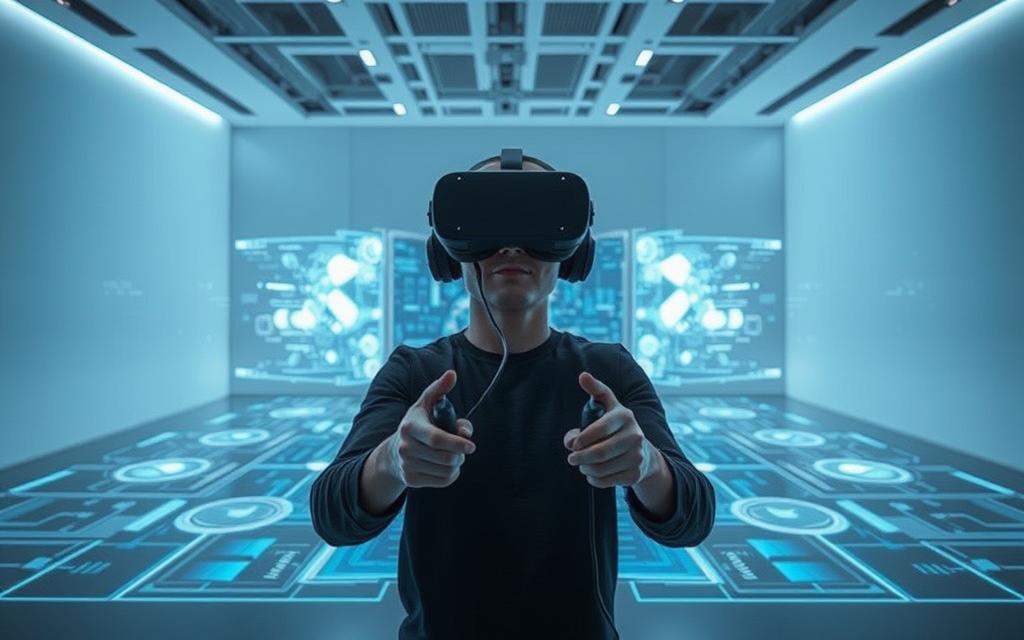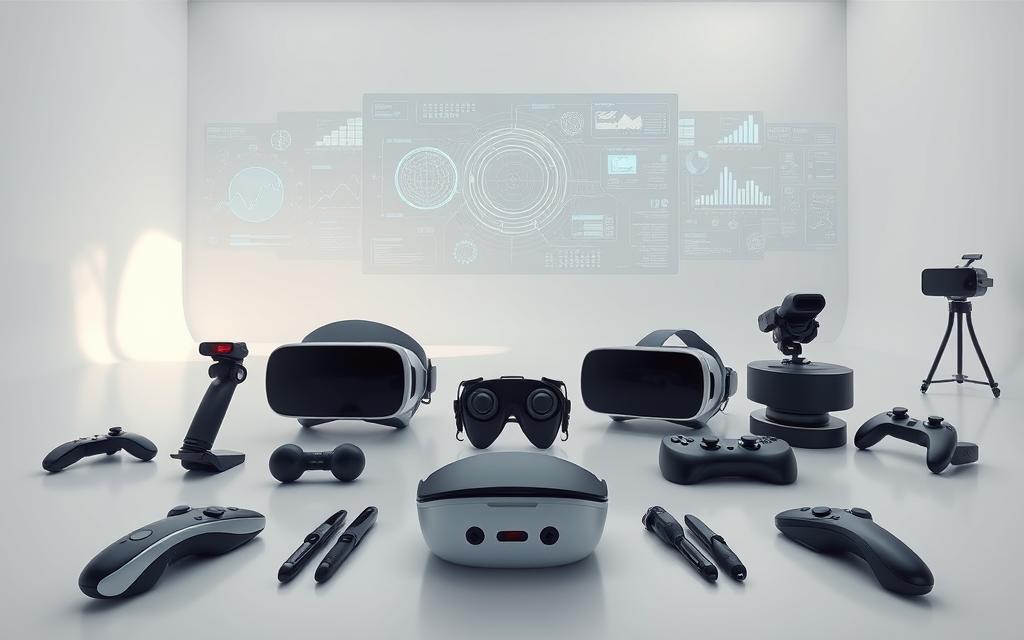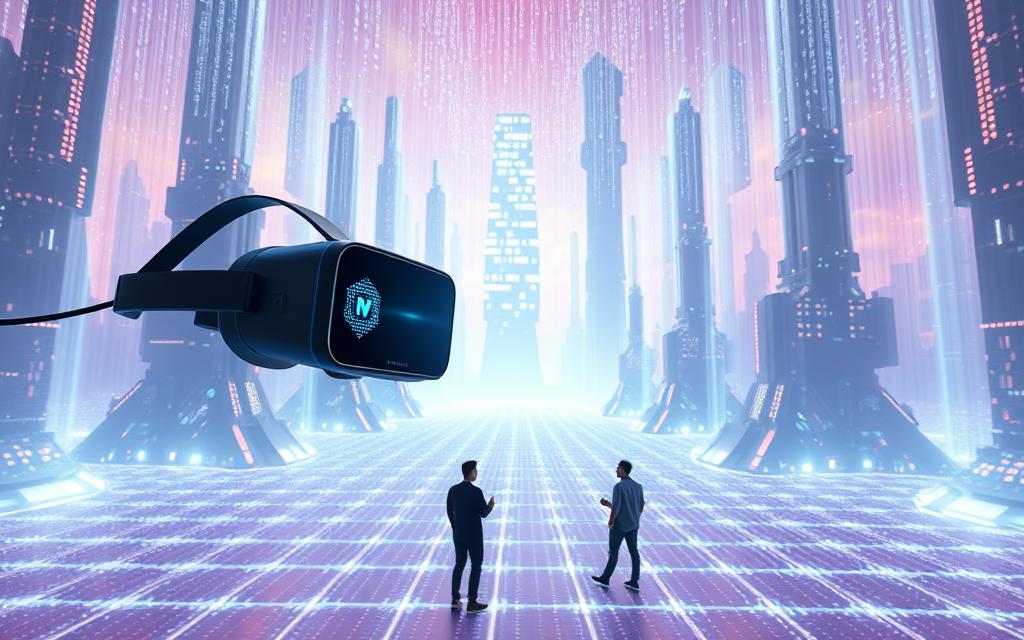Virtual reality is transforming the way we interact with technology, offering immersive experiences that were previously unimaginable.
As VR development advances, it’s becoming increasingly clear that this technology is not just a novelty, but a significant step forward in how we live, work, and play. The benefits of VR are vast, ranging from enhanced gaming experiences to new methods of education and training.
The impact of virtual reality on future technology is substantial, with potential applications in various fields, including healthcare, entertainment, and education. As VR continues to evolve, it’s likely to play a major role in shaping our technological landscape.
The Evolution of Digital Experiences
As technology advances, our digital experiences become increasingly sophisticated and engaging. The journey from traditional screens to immersive technologies like virtual reality (VR) and augmented reality (AR) has been remarkable.
From Pixels to Immersion: Our Digital Journey
The evolution of digital experiences has been a gradual process. We started with simple pixelated graphics and have now moved to highly immersive environments. Virtual reality technology has played a significant role in this transformation, offering users a chance to engage with digital content in entirely new ways. For instance, VR in entertainment has opened up new avenues for storytelling and audience engagement.

Why Traditional Screens May Not Be Enough Anymore
Traditional screens, while still prevalent, are becoming limiting. The demand for more interactive and immersive experiences is on the rise. Augmented reality and VR are at the forefront of this change, providing immersive digital experiences that were previously unimaginable. As we look to the future of technology, it’s clear that digital advancements will continue to shape how we interact with the world around us.
The shift towards more immersive technologies signifies a broader technology evolution, where the boundaries between the physical and digital worlds are becoming increasingly blurred.
Beyond the Screen: Is Virtual Reality Our True Future
Virtual reality is more than just a new gadget; it’s a gateway to new dimensions of experience and interaction. As we explore the potential of VR, it’s essential to understand what sets it apart from previous technologies and how it’s changing the way we engage with digital content.
What Makes VR Different from Everything Before
Virtual reality stands out due to its immersive nature, allowing users to step into a completely digital environment. This immersion is achieved through a combination of hardware and software that work together to create a believable and interactive world. VR applications range from gaming and entertainment to education and healthcare, showcasing its versatility.
The impact of VR is being felt across various industries, with vr industry trends indicating a significant shift towards more immersive experiences. As VR technology continues to evolve, we can expect to see new and innovative applications that further blur the lines between the physical and digital.

| Industry | VR Application | Impact |
|---|---|---|
| Gaming | Immersive gaming experiences | Increased player engagement |
| Education | Interactive learning environments | Enhanced student understanding |
| Healthcare | Therapy and treatment tools | Improved patient outcomes |
The Fundamental Shift: From Watching to Being
The advent of VR represents a fundamental shift in how we interact with digital content, moving from a passive watching experience to an active participation model. This shift is driven by virtual reality development that focuses on creating engaging and interactive experiences.
As VR continues to advance, it’s likely to have a profound vr impact on society, changing the way we live, work, and interact with one another. The potential for VR to revolutionize various aspects of our lives is vast, and it’s an exciting time to be exploring this technology.
Today’s VR Landscape: Where We Stand
Virtual reality has made significant strides in recent years, with vr adoption rates steadily increasing across various industries. The benefits of virtual reality are being realized in fields such as education, healthcare, and entertainment, where immersive technologies are revolutionizing the way we experience digital content.
VR applications across industries are diverse, ranging from training simulations to therapy sessions, and even virtual travel experiences. The impact of virtual reality on these industries is profound, enabling new forms of interactive media that were previously unimaginable. As vr advancements continue, we can expect to see even more innovative applications in the future.
The future of virtual reality looks bright, with ongoing developments in hardware and software pushing the boundaries of what is possible. As the technology continues to evolve, we can expect to see widespread adoption across various sectors, transforming the way we live, work, and play. The future of interactive media is undoubtedly tied to the continued growth and development of immersive technologies like VR.




